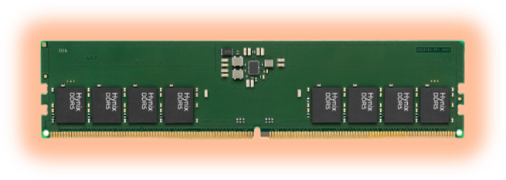Optimizing Memory Architectures for Wearable Health Devices

In our fast-paced world, “smart” and “mobile” have become key characteristics of our favorite devices at home and work. That is also the case in the healthcare industry: The telehealth market and the medical applications that allow for remote health monitoring are booming. Wearable health devices require memory architectures that strike the delicate balance between data storage capacity, energy efficiency, and real-time processing capabilities. At the same time, the industry requirements for any of the embedded components in medical applications are very high. Given the nature of the data being stored and processed, all the embedded chips should be reliable, stable, long-lasting, and available long-term. Understanding the intricacies of memory optimization is crucial for delivering technologies that meet all these demands of modern healthcare.
Monitoring health
Mobile health devices span a wide range of commercial grade and medical-grade products and technologies, ranging from fitness trackers to heart monitors. eMMCs embedded in wearable devices in particular assist with diagnosis, patient monitoring, treatment, and homecare. They have revolutionized how medical professionals and individuals can monitor health and well-being. These devices continuously collect and analyze data such as heart rate and other vitals, activity levels, sleep patterns, and more, providing users with valuable insights into the patient’s or their own health status. However, designing memory architectures for such devices comes with a unique set of challenges. Depending on the exact healthcare application and whether or not it is medical-grade or for consumers, devices have to go through rigorous testing for industry certifications. Procurement and engineering need to judiciously select the right technology and manufacturer from the early design stages of a product to avoid repairs and redesigns down the road.
Maximizing storage capacity
Data storage capacity is a critical consideration. While mobile health devices generate vast amounts of data, they often have limited onboard storage capacity due to size constraints trying to fit around the human body or in pockets. Therefore, optimizing data storage formats and compression algorithms to maximize storage capacity without compromising data integrity or processing speed is essential. By efficiently encoding and compressing data, wearable devices can store more information within limited memory resources.
Minimizing power consumption
The second challenge is energy efficiency, which is paramount in wearable health devices, where battery life directly impacts user experience. Memory components must consume minimal power to maximize battery life without sacrificing performance. That requires implementing low-power design techniques and selecting memory technologies optimized for energy efficiency. One approach is to leverage low-power memory technologies that offer a balance between energy efficiency and performance such as LPDDR (Low Power DDR) or eMMC (embedded MultiMediaCard) for embedded chips and SD or microSD cards for removable storage. These DRAM and FLASH components enable efficient data storage and retrieval while minimizing power consumption.
Speed and efficiency
Lastly, real-time processing capabilities are crucial for telehealth devices, particularly those used for continuous monitoring and data analysis. Memory architectures must support fast and efficient data processing to provide real-time insights to users. This involves selecting memory components with high-speed access and optimizing data processing algorithms. Advanced caching techniques are often implemented to enhance data access speeds and reduce power consumption. By intelligently caching frequently accessed data in low-power memory, wearable devices can achieve faster response times while conserving energy.
Optimizing memory architectures for telehealth devices is a complex yet essential task. By balancing data storage capacity, energy efficiency, and real-time processing capabilities, engineers can design memory systems that enable continuous monitoring and data analysis while maximizing user experience. Our portfolio of memory components can deliver the reliability, stability, and durability needed for long-life applications in healthcare, including a selection of industrial and commercial DDR3(L) components, SD and microSD Cards, and our FLASH eMMC product family, ideal for adding low-power non-volatile storage with control, wear leveling, and error correction in a compact package footprint.
SMARTsemi is your supply chain partner for DRAM components, eMMC solutions, and SD/microSD Flash Memory Cards for long-life applications. With 20+ years of industry experience, we understand your challenges and have aligned our priorities with yours to simplify your memory chip supply chain for the long run. We know what you need before you need it. Get a jump start and request a sample today.







